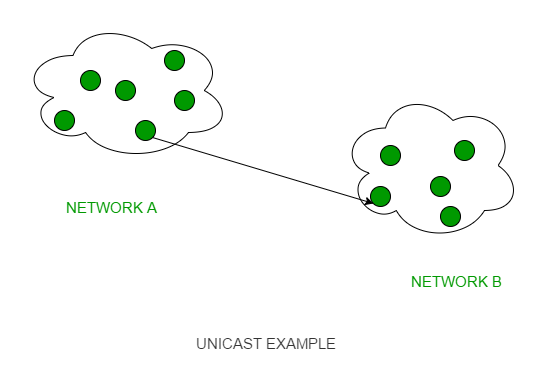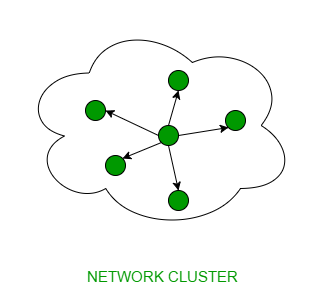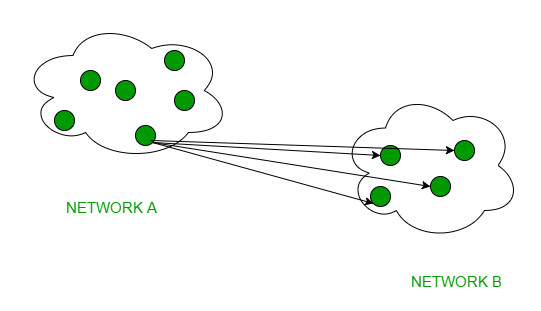Difference between Unicast, Broadcast and Multicast in Computer Network
Last Updated :
04 May, 2023
The cast term here signifies some data(stream of packets) is being transmitted to the recipient(s) from the client(s) side over the communication channel that helps them to communicate. Let’s see some of the “cast” concepts that are prevailing in the computer networks field.
| Feature |
Unicast |
Broadcast |
Multicast |
| Definition |
A communication where a message is sent from one sender to one receiver. |
A communication where a message is sent from one sender to all receivers. |
A communication where a message is sent from one sender to a group of receivers |
| Transmission |
Data is sent to a single recipient |
Data is sent to all recipients in a network |
Data is sent to a group of recipients |
| Addressing |
Uses a unique destination address |
Uses a special broadcast address |
Uses a special multicast address |
| Delivery |
Guaranteed delivery |
Not all devices may be interested in the data |
Not all devices may be interested in the data |
| Network Traffic |
Generates the least amount of network traffic |
Generates the most amount of network traffic |
Generates moderate network traffic |
| Security |
More secure because data is sent to a specific recipient |
Less secure because data is sent to all devices in the network |
Moderately secure because data is sent to a specific group of devices |
| Examples |
Email, file transfer |
DHCP requests, ARP requests |
Video streaming, online gaming |
| Destination |
Single receiver |
All receivers |
Grop of receivers |
| Bandwidth usage |
Moderate |
High |
Moderate |
| Latency |
Low |
High |
Moderate |
1. Unicast:
This type of information transfer is useful when there is a participation of a single sender and a single recipient. So, in short, you can term it a one-to-one transmission. For example, if a device having IP address 10.1.2.0 in a network wants to send the traffic stream(data packets) to the device with IP address 20.12.4.2 in the other network, then unicast comes into the picture. This is the most common form of data transfer over networks.

2. Broadcast:
Broadcasting transfer (one-to-all) techniques can be classified into two types:
Limited Broadcasting: Suppose you have to send a stream of packets to all the devices over the network that your reside, this broadcasting comes in handy. For this to achieve, it will append 255.255.255.255 (all the 32 bits of IP address set to 1) called Limited Broadcast Address in the destination address of the datagram (packet) header which is reserved for information transfer to all the recipients from a single client (sender) over the network.

Direct Broadcasting: This is useful when a device in one network wants to transfer packet stream to all the devices over the other network. This is achieved by translating all the Host ID part bits of the destination address to 1, referred to as Direct Broadcast Address in the datagram header for information transfer.

This mode is mainly utilized by television networks for video and audio distribution. One important protocol of this class in Computer Networks is Address Resolution Protocol (ARP) which is used for resolving an IP address into a physical address which is necessary for underlying communication.
3. Multicast:
In multicasting, one/more senders and one/more recipients participate in data transfer traffic. In this method traffic recline between the boundaries of unicast (one-to-one) and broadcast (one-to-all). Multicast lets servers direct single copies of data streams that are then simulated and routed to hosts that request it. IP multicast requires the support of some other protocols like IGMP (Internet Group Management Protocol), Multicast routing for its work. Also in Classful IP addressing Class D is reserved for multicast groups.
Questions Corner:
Practicing the following questions will help you test your knowledge. It is highly recommended that you practice them.
- Direct Broadcast Address
- Direct Broadcast Address
- Direct Broadcast Address
Share your thoughts in the comments
Please Login to comment...